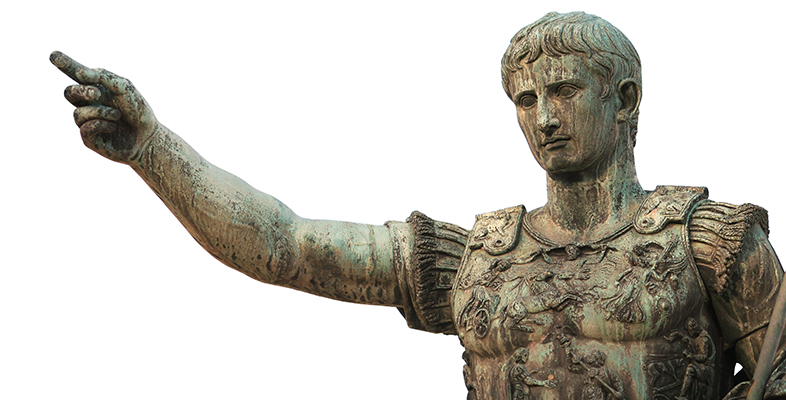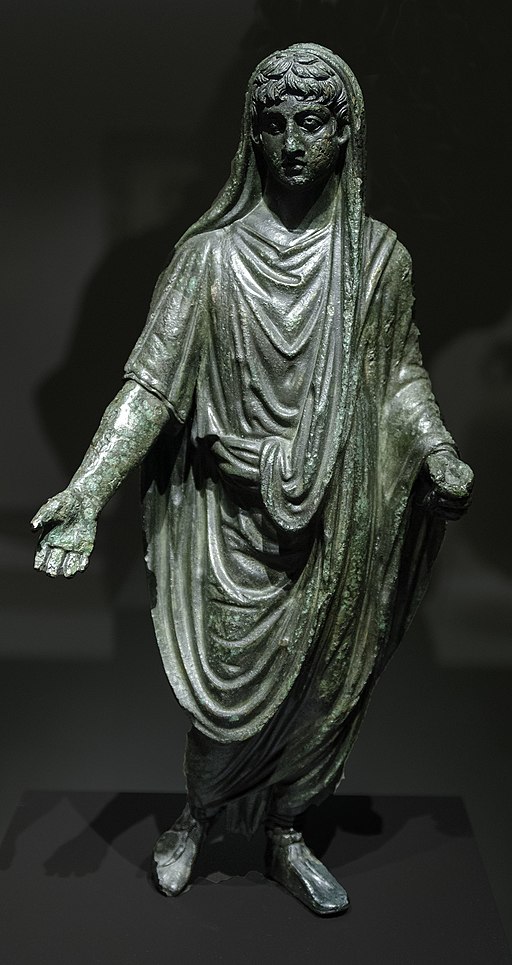3.4 Capite velato
It wasn’t just the form of the toga that was important, but also its drapery, as the previous section showed. Another important toga draping style throughout Roman history was so-called ‘capite velato’ or ‘covering the head’, in which the back part of the balteus – or in the case of the Augustan toga the sinus (see image H in Figure 13 in the previous section) – was pulled up over the back of the head. This was a sign of respect for the gods and was used during religious ceremonies such as sacrifices. When men chose to have themselves portrayed in the toga capite velato, it showed they wanted to be seen as pious, modest and respectful of the gods. Figure 14 is an illustration of how it looked.

